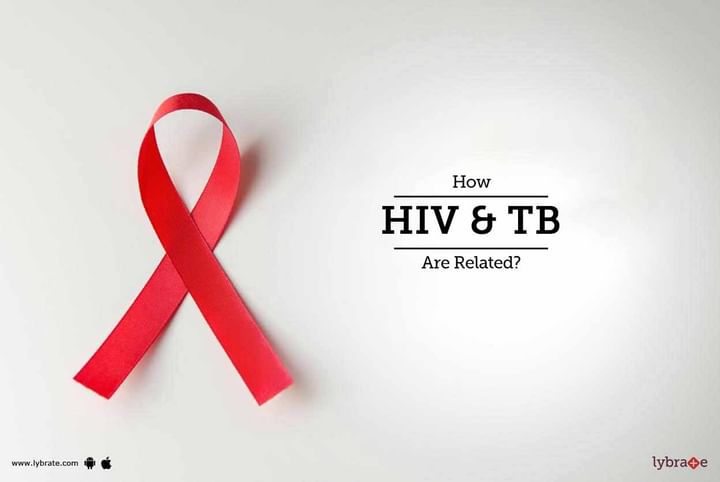How HIV & TB Are Related?
Tuberculosis is an opportunistic infection caused by the bacteria Mycobacterium tuberculosis. The infections occurring in people with weak immunity as compared to the people with a healthy immune system are called as opportunistic infections. As, HIV enters the human body, it replicates and weakens the immune system which in turn increases the risk of contracting Tuberculosis in people already suffering from HIV infection.
An HIV and Tuberculosis co-infection occurs when an individual has both, the HIV infection and an either latent or active TB disease simultaneously. Each disease acts in speeding up the progress of the other, when HIV and TB infection is present together in the body. HIV infection speeds up the progression from latent to active Tuberculosis, Mycobacterium tuberculosis also accelerates the progression of replication and spread of the HIV infection.
HIV infection and Tuberculosis are totally different type of infectious diseases. HIV is a viral infection and TB is a bacterial one. An HIV infected person will not contract TB unless a contact happens with a TB infected person. TB spreads via droplet infection and is communicable. If a person lives in a country with a high prevalence rate of TB, an HIV patient is highly susceptible to contracting the infection. In the similar manner, a person suffering from TB gets infected with the HIV infection only through the blood and bodily fluids borne route, with unprotected sexual intercourse with an HIV infected individual being the most important cause.
Amongst all the other opportunistic infections, TB occurs at an earlier stage in the course of an HIV infection than most other opportunistic infections. Mortality rate in the co-infected patients is more than twice that of HIV infected individuals without a TB infection. Even if a patient is undergoing anti-retroviral therapy, the death rates remain high in co-infected individuals.The natural history and course of TB gets altered in people with an infected immune system. The damage to immunity due to HIV infection causes a drastic reduction in the pathogen killing capacity of the body. In such patients if there is no anti-retroviral treatment prescribed, then the latency period between the infection and progression of disease gets eliminated.
An active phase of TB is observed in such individuals progressing within a short span of time, ranging from weeks to months, rather than years as it normally should be spanning. Risk of progression from a latent stage to an active stage of TB is around 10-15 times greater in an HIV infected individual as compared to the non-infected person. Such individuals also communicate the disease more rapidly to others.Pulmonary tuberculosis in an HIV infected person can present similar symptoms like that of a classic TB disease. However, a co-infection can sometimes show less presenting TB symptoms, where even the chest X-ray scans can be observed to be normal. A ‘subclinical’ phase of Tb in co-infected patients can cause delay in the diagnosis of the symptoms and subsequently affect the prognosis due to lack of timely treatment.
Social stigma and discrimination has caused an obstacle in provision of adequate treatment for people with HIV. Proper counseling and initiatives taken to provide indiscriminate care can aid in identification of co-infection and earlier stages. Anti-retroviral treatment teamed up with anti-tubercular drug regimen is prescribed and a successful treatment for drug sensitive cases of TB can be provided with medications for 6-8 months.



+1.svg)
